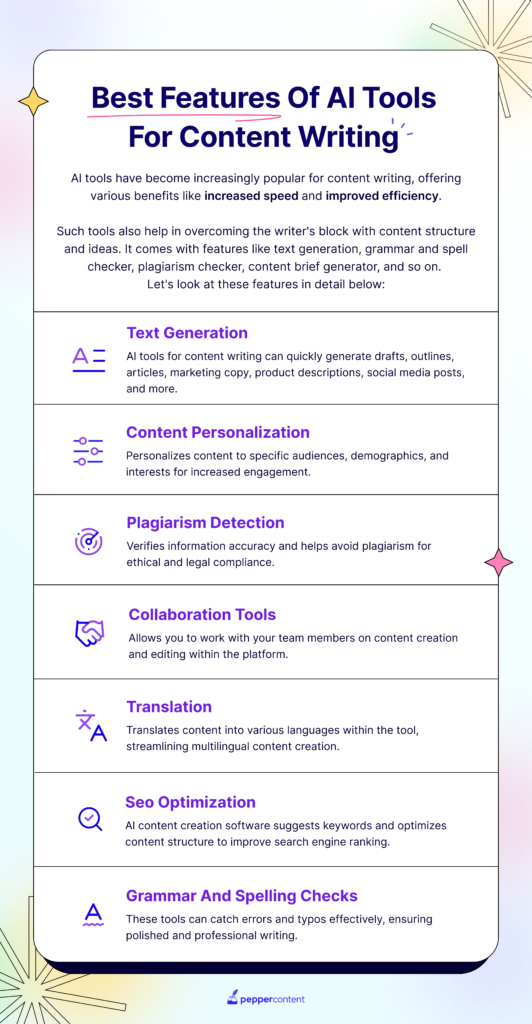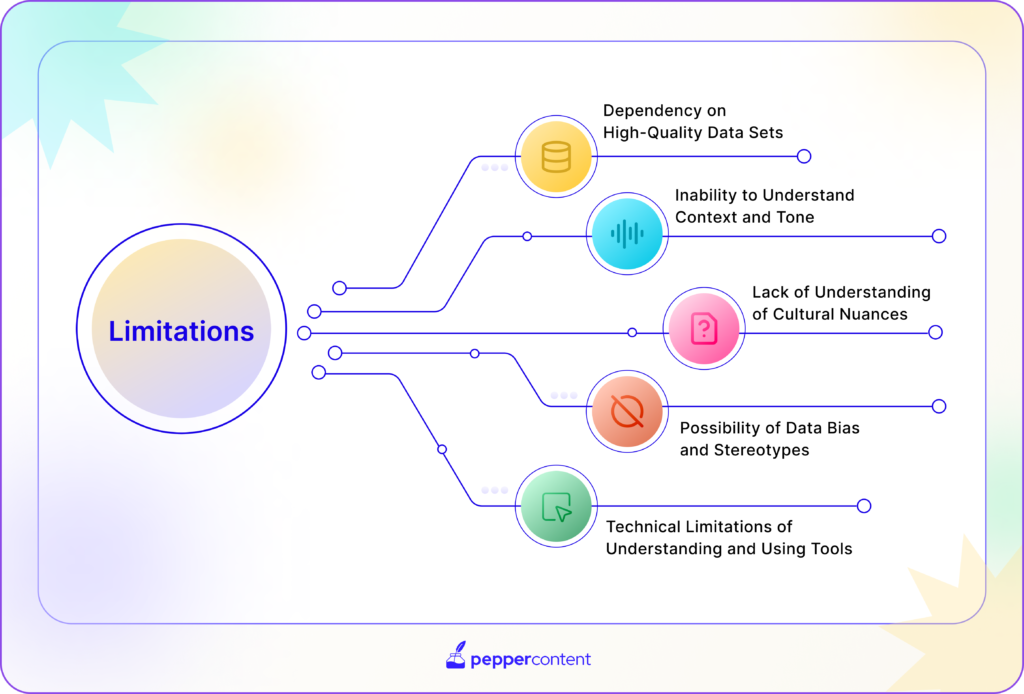The Impact of AI Writing Tools on Content Creation and the Future

Writing has been an essential part of human civilization for thousands of years, evolving from primitive cave paintings to today’s sophisticated literature. As society advanced, so did our tools for writing. The quill gave way to the typewriter, which eventually evolved into the computer. Now, in the age of artificial intelligence, there are AI writing tools. These tools are changing content creation and offering more efficiency and creativity. In this blog, we will take a deep dive into the evolution of writing and focus on the rise of AI writing tools and their impact on the future of content creation.
A Quick History Of Writing Before AI Writing Tools
The earliest forms of writing date back to ancient Mesopotamia, around 3400 BCE. These early scripts were rudimentary, using pictographs to convey basic ideas. Over time, writing systems became more complex, leading to the development of alphabets, written languages, and the literature we know today.
The invention of the printing press in the 15th century was a pivotal moment in the history of writing. It made books and written content more accessible to the masses, laying the groundwork for the modern era of writing, where technology plays a central role.
The Digital Revolution
The dawn of computers in the 20th century marked the beginning of a new era in writing. Word processors like Microsoft Word revolutionized how people wrote, allowing for easier editing, formatting, and sharing of documents. The internet further expanded the possibilities and enabled writers to reach global audiences with the click of a button.
As the volume of content on the internet grew, so did the demand for faster and more efficient writing processes.
The Emergence of AI Writing Tools
AI writing tools are software programs powered by artificial intelligence that can generate, edit, and optimize written content. These tools use machine learning algorithms to analyze vast amounts of text data, learning patterns, and structures that allow them to produce human-like writing. The first iterations of AI writing tools were relatively basic, focusing on tasks like checking grammar and restructuring sentences. However, advancements in AI technology led to better tools capable of generating entire articles, stories, and even poetry.
How AI Writing Tools Work
AI writing tools are natural language processing (NLP) and machine learning algorithms. NLP allows these tools to understand, interpret, and generate human language, while machine learning enables them to improve over time by learning from the data they process. When a user inputs a prompt or topic, the AI writing tool analyzes it and generates content that matches the style, tone, and structure requested.
For example, an AI writing tool can create blog posts, social media content, product descriptions, and even complex research papers. These tools’ capabilities are increasing, and they are fast becoming assets for content creators, marketers, and businesses.
Advantages of AI Writing Tools
1. Efficiency: One of the most significant advantages of AI writing tools is the speed at which they produce content. What might take a human writer hours or even days to complete can be done in minutes by an AI writing tool.
2. Cost-Effective: Many AI writing tools, including free options, offer affordable solutions for content creation. For small businesses or individual content creators, this can be a game-changer, allowing them to produce high-quality content without breaking the bank.
3. Consistency: AI writing tools can maintain a consistent tone and style across all content, particularly useful for brands that must adhere to specific guidelines.
4. SEO Optimization: Many AI writing tools come equipped with features that help optimize content for search engines, ensuring that the content ranks well on platforms like Google.5. Language
5. Diversity: Some AI writing tools offer multilingual capabilities, enabling users to create content in different languages and thereby reach a broader audience.

Tips to Choose The Right AI Writing Tool
With the plethora of AI writing tools available, choosing the right one can be overwhelming. Here are some factors to consider when selecting an AI writing tool:
1. Purpose: Identify your specific content creation needs. Are you seeking a tool to generate blog posts, social media content, or academic papers? Different AI writing tools are designed for various purposes.
2. Features: Look for tools that offer the needed features, such as SEO optimization, grammar checking, or multilingual support.
3. Ease of Use: Choose a tool with an intuitive interface that allows you to create content easily without a steep learning curve.
4. Cost: While many AI writing tools free up your budget, some offer premium features at a cost. Consider your budget and the value of the features offered.
5. Customer Support: Opt for tools that provide reliable customer support if you encounter any issues.
Free AI Writing Tools
As AI technology advances, the market for AI writing tools has expanded, with many AI writing tools that are free now available. These free AI writing tools often offer basic features, making them ideal for beginners or those with limited content creation needs. Some popular free AI writing tools include:
1. Grammarly: While primarily known for its grammar-checking capabilities, Grammarly also offers AI-powered suggestions for improving clarity, tone, and style.
2. Hemingway Editor: This tool analyzes text for readability, highlighting complex sentences and suggesting simpler alternatives.
3. QuillBot: This AI-powered paraphrasing tool can rephrase sentences while maintaining the original meaning, which can help avoid plagiarism.
4. Copy.ai offers a free plan that allows users to generate short-form content such as social media posts, product descriptions, and more.
These AI writing tools free users from the burden of repetitive tasks, allowing them to focus on more creative aspects of content creation.
Navigating the Complexities of AI Writing Tools
While AI writing tools offer substantial benefits, they come with their own set of challenges. A significant concern is the potential for these tools to produce content that needs more originality. Since AI writing tools generate text based on existing data, there’s a risk that the content may become repetitive or formulaic. This reliance on pre-existing information can sometimes stifle creativity and lead to content that lacks a unique voice. Another pressing issue is the ethical aspect of AI-generated content. As AI writing tools become more integrated into content creation processes, questions about authorship and intellectual property gain importance. There’s also the potential for misinformation, as AI systems might inadvertently propagate errors or biases in their training data. As AI writing tools become increasingly common, these ethical considerations need thoughtful attention to ensure responsible use. However, understanding the limitations of AI writing tools can be overcome with some practical solutions for your content creation process.

The Role of AI Writing Tools
AI writing tools are reshaping content creation by introducing new ways to produce and manage text. These tools offer various features designed to enhance productivity and streamline workflows. While these advancements provide notable efficiencies, they also require a balanced approach to ensure they complement rather than replace human creativity.
Creativity and Originality
Although AI writing tools can assist in generating content quickly, their ability to infuse originality still needs to be improved. These tools excel at structuring and organizing text but often require more nuanced creativity that human writers bring. It’s essential to use these tools as aids rather than substitutes for genuine creative input.
Personalization and Adaptability
AI writing tools are becoming more adept at tailoring content to specific audiences. This capability allows for more personalized communication, addressing individual preferences and needs. However, users should be mindful of the potential limitations in achieving true personalization, as AI-generated content might not always capture the subtleties of human touch.
Collaboration and Efficiency
Integrating AI writing tools into the content creation process can enhance collaboration between human writers and machines. These tools can handle routine tasks, freeing up time for writers to focus on more strategic and creative aspects of their work. Effective collaboration between human insight and AI efficiency can yield impressive results.
Ethical Use
As AI writing tools become more prevalent, their ethical use is a growing concern. Developing practices to reduce biases and ensure the accuracy of AI-generated content is crucial. Addressing these concerns will help maintain the integrity of content while making the most of the advantages that AI writing tools offer.
AI writing tools are proving to be valuable assets in modern content creation. Users can harness their benefits by understanding their limitations, addressing ethical issues, and ensuring responsible use. Balancing AI assistance with human creativity will produce more effective and meaningful content.
Try Pepper Content CMP for your content marketing strategy. Book a demo today!
Latest Blogs
Explore how Google’s 2025 AI search updates triggered ranking chaos. Learn actionable strategies to adapt your SEO for AI Overviews, zero-click searches, and SERP volatility. Stay ahead now.
Learn how to rank on AI search engines like ChatGPT, Perplexity, and Gemini by optimizing your content for authority, structure, and relevance. Stay ahead in AI-driven search with this strategic guide.
Explore the best healthcare SEO services for your medical practice. Improve online visibility and effectively reach more patients in need of your services.
Get your hands on the latest news!
Similar Posts

Artificial Intelligence
5 mins read
How Free AI Tools for Content Creation Can Boost Your Content Strategy

Artificial Intelligence
4 mins read
AI Content Generators: Making Content Creation Easier for Businesses

Artificial Intelligence
4 mins read